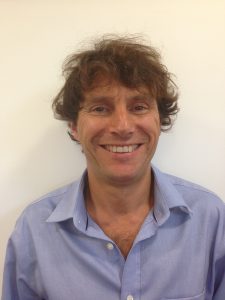 Alex Harding is a GP and academic based in Exeter.
Alex Harding is a GP and academic based in Exeter.
UK General Practitioners are the largest part of the medical workforce, deliver the most care and deliver this care highly effectively. Most people who have ventured abroad and talked about health are surprised at the envious comments from patients and practitioners alike about the UK health system under the NHS.
However the UK GP workforce has not kept pace with the increases in healthcare need, increases in similar workforces abroad or increases in other health professionals in the UK.
In order to address this and an impending GP workforce crisis the English Department of Health has mandated HEE to ensure that by next year 50% of graduates will opt for GP training. At present however, 19% of final year students want to be GPs and many GP training schemes are struggling to recruit enough graduates. In some parts of the country there are now 40% vacancy rates.
There is some good research that shows that exposure to general practice as a medical student has a strong positive effect on future career choice and so appropriate general practice experience as a medical student is an important part of workforce planning.
With this in mind, we surveyed the UK medical schools regarding undergraduate and postgraduate teaching provision and how this was supported in financial and academic terms. We used standard methods to develop a questionnaire and then piloted and modified it.
We were pleased to get a 94% response rate, with 29 out of the 31 medical schools in existence at the time taking part.
The results came as a surprise. We found that the percentage of the curriculum taught in general practice was 13% and that this has remained static since 2002. We also found that when we measured teaching provision in another way (the total number of GP teaching sessions delivered over the entirety of the course) it had actually fallen – from 122 total sessions in 2007 to 102 sessions. This represents a 2 week loss of GP teaching overall.
We were interested to find out why this might be and looked at how teaching was supported. Here we found an apparent disparity between the teaching delivered and payment for teaching received. In addition, many respondents commented that the process of reimbursement for GP teaching seemed unnecessarily complex.
We then looked at teaching support from departments of general practice. We found that departments offering both educational and research capability had dropped by 50%.
Perhaps the most surprising finding however, has been the rapid expansion of postgraduate teaching. Prior to the year 2000 there were no foundation doctors, fewer postgraduate trainees and these trainees spent only 12 months in practice. Calculated in months of experience the total increase is over 80,000 months in little more than a decade. This compares with a total reduction of 15,000 months of undergraduate provision over the same time (2 week reduction for the 30,000 medical students currently being taught).
A number of things are apparent. Firstly, seismic changes have been occurring in general practice teaching – especially in the postgraduate sphere and in the fate of integrated departments of general practice. In contrast, undergraduate teaching seems to have risen slowly – having taken almost 50 years to reach its current level of 13%, but may now be falling.
It is tempting to propose some explanations. Dramatic increases in patient demand and government regulation may play a part in squeezing out medical students who are unable to make meaningful contributions to service delivery – unlike postgraduate trainees.
The rate of reimbursement for undergraduate teaching may also be relevant and is currently being reviewed. This may provide an opportunity to address the disparity between teaching provision and pay. A simpler mechanism of payment may also be beneficial where monies are paid direct to GPs rather than being routed through various other organisations. An important additional factor is reimbursement for space. Lack of space was identified in our survey as the main factor preventing expansion of teaching. Finally, educational support from departments may also be helpful. These are not easy issues to resolve and central planning and guidance may be necessary. GPs and the NHS are part of the fabric of our society and a debate needs to happen regarding the role of general practice in undergraduate education. After the words concerning the value of general practice and education must come actions.







2001 Cambridge VTS 60% of us were ‘self-construct’ GP regs with membership of another college. Shorter afterwards this way into primary care was removed..we need to rebook at flexible entry…